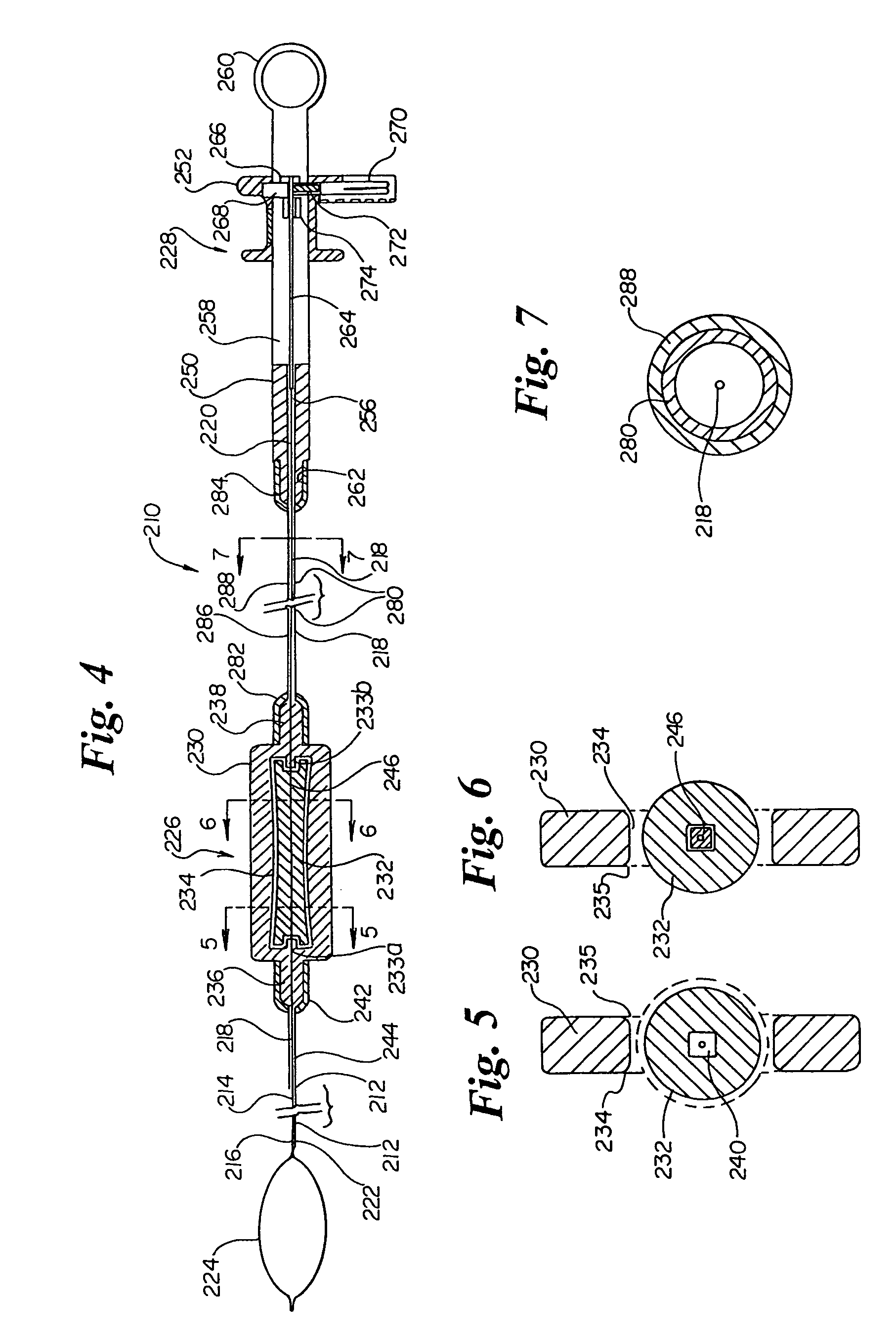Multifilar flexible rotary shaft and medical instruments incorporating the same
a flexible rotary shaft and multi-filament technology, applied in the field of flexible rotary shafts, can solve the problems of increased hysteresis, difficult to handle as a sub-assembly, and nevertheless have their own disadvantages, so as to reduce hysteresis
- Summary
- Abstract
- Description
- Claims
- Application Information
AI Technical Summary
Benefits of technology
Problems solved by technology
Method used
Image
Examples
Embodiment Construction
[0032]Referring now to FIG. 3, a multifilar flexible rotary shaft 100 according to the present invention includes a plurality of individual filaments, e.g. 102, 104, 106, 108, 110, 112, 114. Each filament has an input end, designated generally as “I” in FIG. 3 and an output end, designated generally as “O” in FIG. 3. All of the input ends are coupled to each other, for example by a coupling 116. All of the output ends are coupled to each other, for example by a coupling 118. The filaments are not tightly wound around each other or around a central core. However, they may be wound together loosely merely to facilitate handling of the shaft. Preferably all of the filaments are identical and, for a plurality of N wires, each wire has 1 / N the yield stress required to transmit the maximum torque required for the shaft.
Discussion of Physical Principals of the Invention
[0033]If a torque is applied to a free mechanical body, that body will begin to take on an accelerating angular velocity. ...
PUM
 Login to View More
Login to View More Abstract
Description
Claims
Application Information
 Login to View More
Login to View More - R&D
- Intellectual Property
- Life Sciences
- Materials
- Tech Scout
- Unparalleled Data Quality
- Higher Quality Content
- 60% Fewer Hallucinations
Browse by: Latest US Patents, China's latest patents, Technical Efficacy Thesaurus, Application Domain, Technology Topic, Popular Technical Reports.
© 2025 PatSnap. All rights reserved.Legal|Privacy policy|Modern Slavery Act Transparency Statement|Sitemap|About US| Contact US: help@patsnap.com



